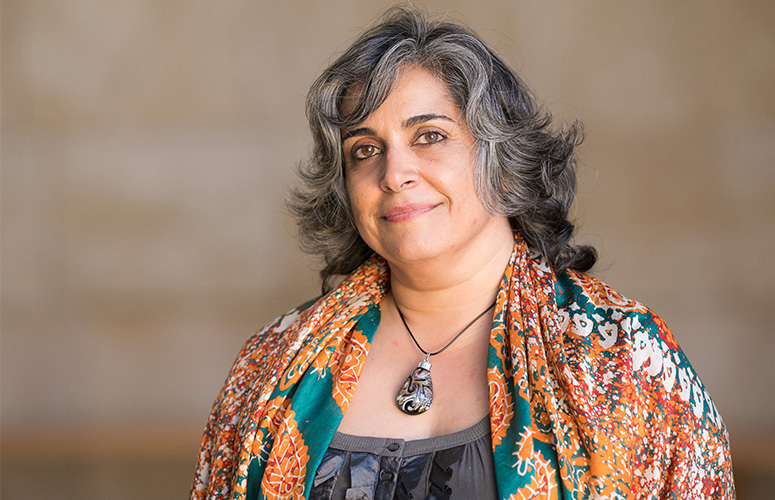A new diagnostic method makes it possible to predict which cancer patients will respond to immunotherapy
Banafshe Larijani, the Ikerbasque professor at the Biofisika Institute, leads the international team that has developed the tool
- Research
First publication date: 11/11/2020

An international group led by Dr Banafshe Larijani, an Ikerbasque researcher seconded to the Biofisika Institute (UPV/EHU-University of the Basque Country, CSIC), has developed a new diagnostic method making it possible to accurately predict which cancer patients will respond positively to immunotherapy. This method will allow oncologists to tailor treatment to each patient and avoid therapies that are not going to be successful.
Immunotherapy is a type of cancer treatment that helps the patient’s immunological system to combat it and has a hugely positive impact in cancer treatments, even though it does not work in all cases: it is highly successful in some patients whereas in others it has little or no effect. Given the risks inherent in these procedures, a growing need has emerged to specify which patients are more likely to benefit from them, thus avoiding unnecessary exposure of those who will not benefit.
Fellow researchers from other centres in the Basque Country (Biocruces, PIE, BCAM), in Europe and the company FASTBASE Solutions Ltd have participated in the group led by Dr Larijani, who is also the director of the Centre for Therapeutic Innovation of the University of Bath (United Kingdom). The new predictive tool has been developed by using an advanced microscopy platform that identifies the interactions between the immune cells and the tumour cells and also informs about the activation state of the immune checkpoints that buffer the anti-tumour response.
The team has published its findings in the prestigious journal Cancer Research. Dr Larijani’s team has analysed one immune checkpoint. In a healthy individual these checkpoints closely regulate the body’s immune response, acting as a switch to prevent self-immune and inflammatory diseases.
Specifically, the immune checkpoint analysed comprises two proteins: PD-1 (present in immune cells known as T-lymphocytes) and PD-L1 (present in other types of immune cells and on the surface of many different types of tumours).
As a rule, when PD-1 on the surface of T-lymphocytes joins up with PD-L1 on the surface of other immune cells, it efficiently switches off the immune function of the T cell. And that is what tumour cells do: when PD-L1 is expressed on their surface, PD-1 is activated in the T-lymphocyte, so their anti-tumour function is deactivated and the tumour is allowed to survive and grow. The inhibitors used in immunotherapy function by interrupting the interaction between PD-L1 on the tumour and PD-1 in the T cell, thus restoring the patient's anti-tumour activity. This new tool determines the scope of the PD-1 / PD-L1 interaction in a tumour biopsy by predicting whether therapy using checkpoint inhibitors is likely to bring significant clinical benefits.
“Right now, decisions about whether to proceed with checkpoint inhibitor treatment are simply based on whether PD-1 and PD-L1 are present in the biopsies rather than in their functional state. However, our work has shown that it is much more important to know that the two proteins actually interact and, therefore, that they are likely to have a functional impact on the survival of the tumour,” said Prof Larijani.
Bibliographic reference
- High PD-1/PD-L1 checkpoint interaction infers tumour selection and therapeutic sensitivity to anti-PD-1/PD-L1 treatment
- Cancer Research 80(19): 4244-4257
- DOI: 10.1158/0008-5472.CAN-20-1117




